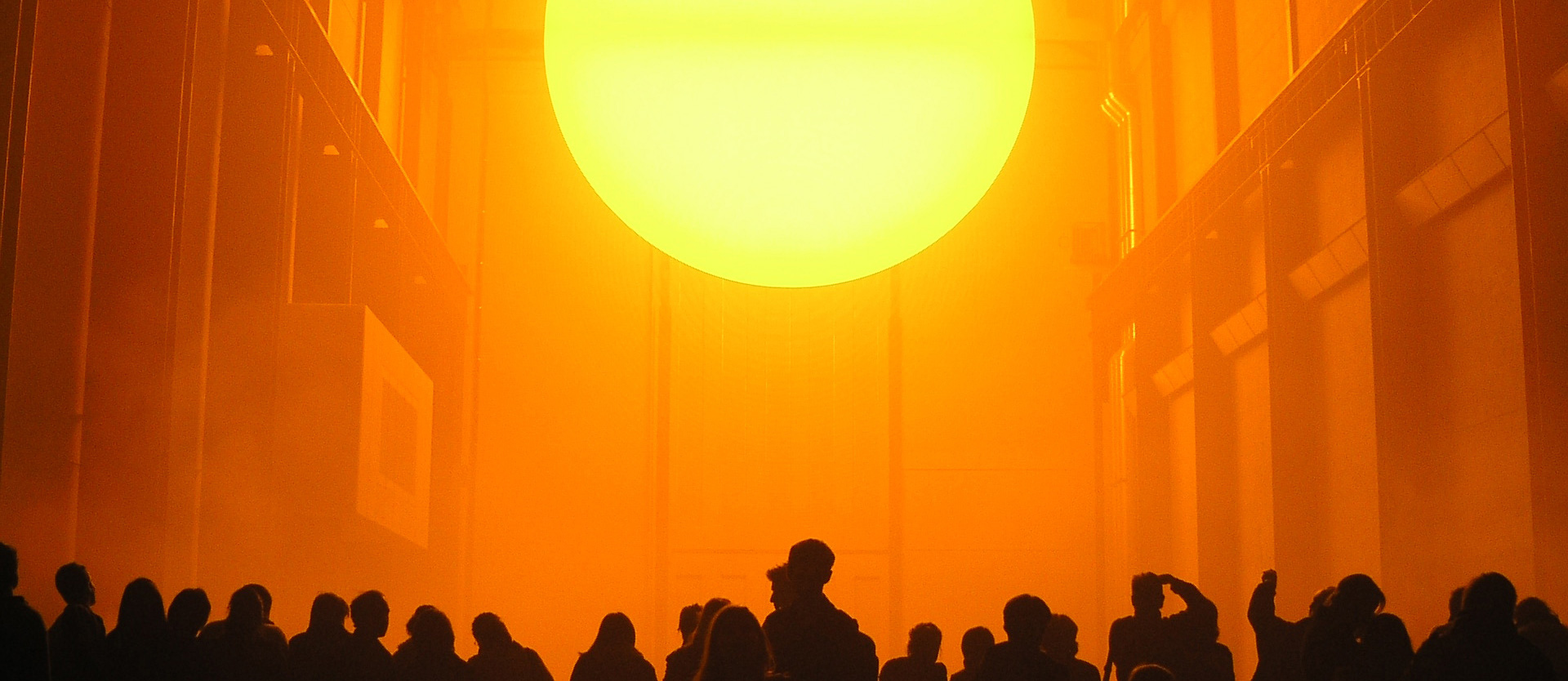
Expanding tradition in an innovative way
Through this visual uniformity, visitors became part of a shared collective ensemble. This effect fostered an awareness of the collective experience of the artwork, providing space to reflect on concepts of individuality and community. Eliasson used light as a tool to temporarily dissolve social structures. In a globalized world where differences are often emphasized, he created a space of unity, inviting viewers to see themselves as equal participants in a shared experience.

The artist Olafur Eliasson. Photo: Runa Maya Mørk Huber/Studio Olafur Eliasson © 2017 Olafur Eliasson
"The Weather Project" is a spatial installation that delves deeply into the symbolic and emotional meanings of light and weather. The sun - an archetypal symbol of life, warmth, and energy - is portrayed in a way that oscillates between artificial construction and natural experience. Eliasson explores the significance of weather as a cultural and emotional phenomenon. Weather is not merely a physical condition but also a metaphor for human moods and social dynamics. In "The Weather Project", the sun, a central symbol of weather, is artificially recreated and brought into an urban, enclosed space. This contrast between interior and exterior, nature and culture, prompts viewers to reflect on how we experience and construct nature. In an era of increasing urgency regarding climate change and environmental degradation, the artificial sun takes on an almost prophetic dimension: it serves as both a reminder of nature’s beauty and a warning of its potential destruction.
"The Weather Project" stands in a long tradition of artists using light as a medium, yet it innovatively expands and transforms this tradition. Eliasson’s work can be seen as an evolution of 20th-century light art, influenced by figures such as László Moholy-Nagy, Dan Flavin, and James Turrell. While Moholy-Nagy and Flavin primarily used light as a sculptural and kinetic element, Turrell focused on the perception of light as a spatial and physical phenomenon. Eliasson integrates these approaches, employing light as both a physical medium and a carrier of meaning and emotion. Unlike Turrell, whose works are often introspective and meditative, "The Weather Project" invites interaction and collective experience.
The depiction of weather in art has a long history, dating back to the Romantic landscape painters of the 19th century. Artists like Caspar David Friedrich and J.M.W. Turner used light and atmosphere to convey the power and beauty of nature. Eliasson updates this tradition by not only representing light but also making it physically and spatially experiential. His artificial sun serves as both an homage to Romanticism and a critical engagement with today’s relationship between humanity and the environment.
"The Weather Project" is a landmark in contemporary art, seamlessly combining technology, aesthetics, and symbolism. It challenges us to reconsider our perceptions, our relationship with nature, and how we experience community. Eliasson’s work reminds us that art is not only a visual experience but also a social and philosophical one - one capable of transforming us as individuals and as a society. This work remains a milestone in light art and an impressive example of how art can transcend the boundaries of science, technology, and emotion.












